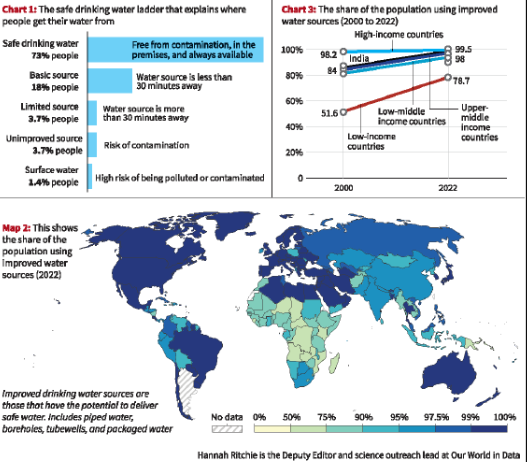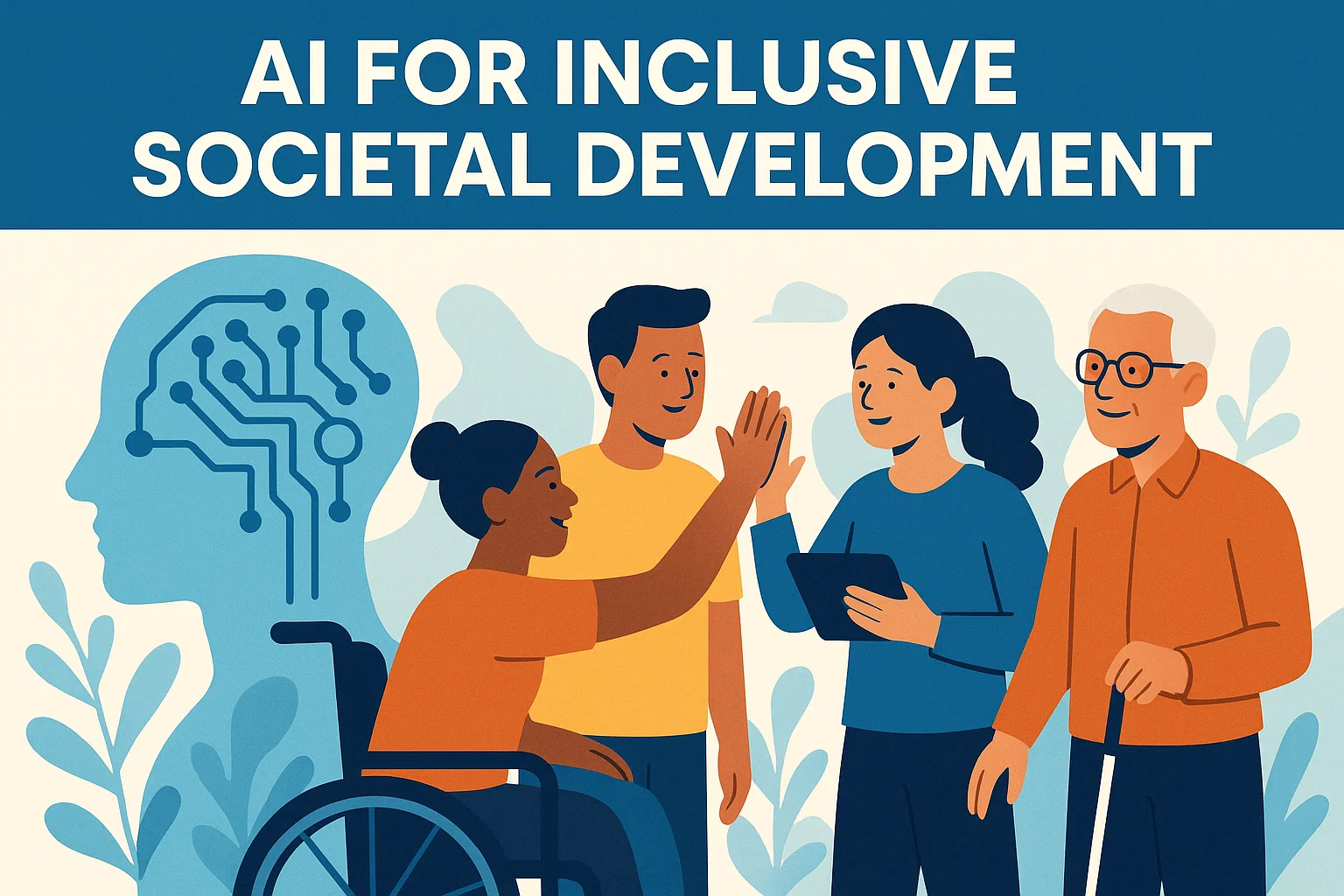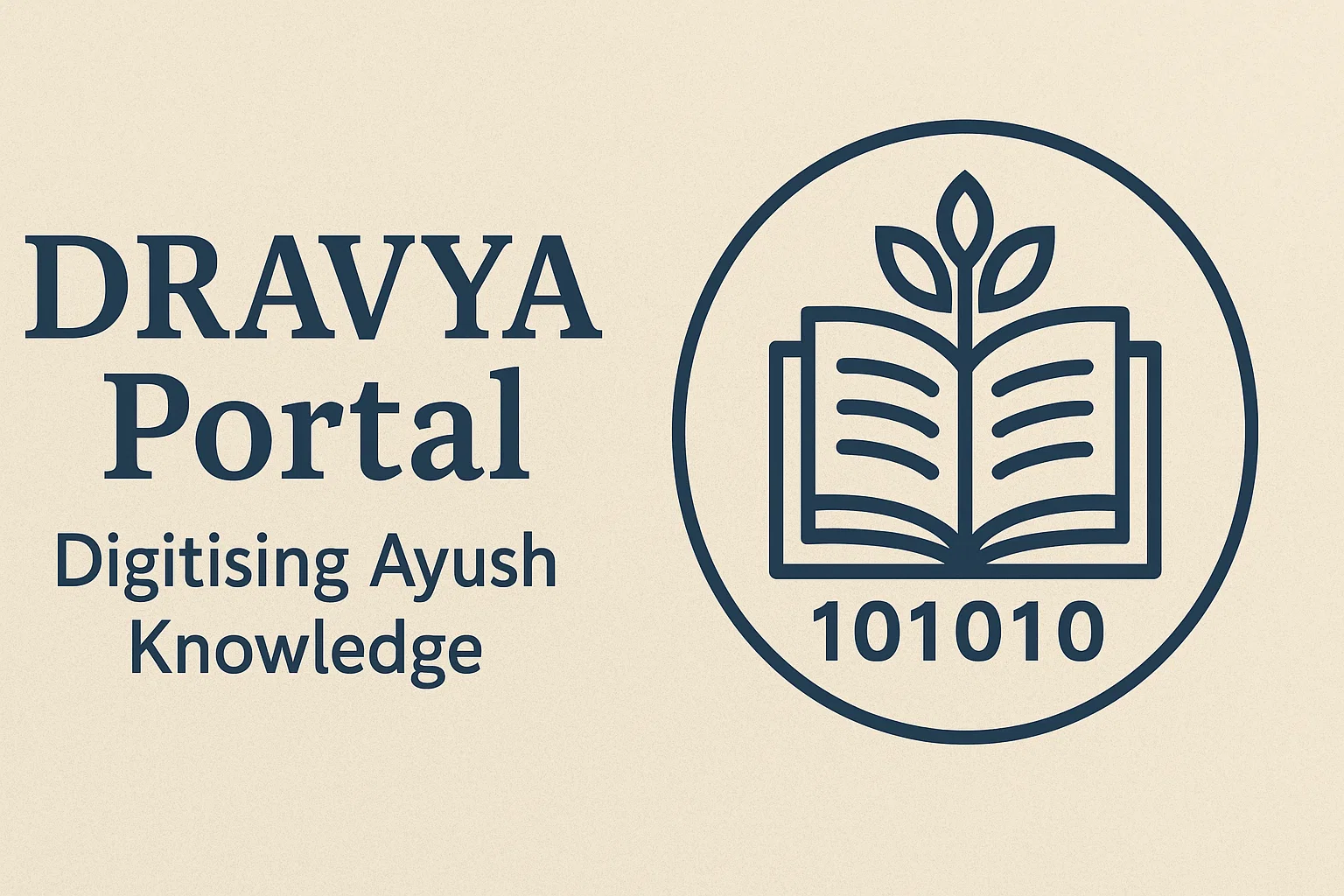Font size:
Print
Two billion people don’t have safe drinking water
Two Billion People Lack Safe Drinking Water: Alarming Global Health Crisis Demands Urgent Action
Context: Despite global development strides, over two billion people still lack access to safe drinking water, exposing them to deadly diseases and deepening cycles of poverty. The issue has gained renewed urgency in 2025, as climate-induced droughts, urban water stress, and infrastructure gaps threaten progress toward SDG 6 on clean water for all.
How Does Access to Safe Water Vary Across Populations?
What is meant by “safe drinking water,” and how is it defined globally?
- Safe drinking water is water that is:
- Free from contamination — including biological (like bacteria), chemical (like arsenic), and radiological pollutants.
- Available on premises — within a person’s home or immediate surroundings.
- Available when needed — not just seasonally or for a few hours a day, but consistently.
- According to the WHO/UNICEF Joint Monitoring Programme (JMP), these three conditions define “safely managed drinking water.”
- Majority Have Access, But Not Always at Home: Nearly 6 billion people have access to drinking water, but 2 billion still do not have safe water at their residence.
- Reliance on Unsafe Sources: Around 1.4% of the global population continues to collect water from unsafe sources like rivers and lakes.
- Disparities by Income and Geography: People in low-income or rural areas are disproportionately affected. In regions like Sub-Saharan Africa and South Asia, many still depend on open water sources, increasing their risk of exposure to contaminants.

What Are the Public Health Impacts of Unsafe Water?
- Spread of Waterborne Diseases: Unsafe water is a major cause of diarrhoeal diseases such as cholera, dysentery, polio, and hepatitis A.
- High Mortality Rates: Over 800,000 deaths annually are attributed to waterborne illnesses, especially in low-income countries with inadequate sanitation.
- Child Mortality and Malnutrition: Contaminated water contributes significantly to malnutrition and child wasting. In India, about 21% of children under five suffer from wasting, with poor water and sanitation as key factors.
- Healthcare and Economic Burden: Frequent illnesses overwhelm public health systems and reduce workforce productivity. For instance, India loses over 4% of its GDP annually due to health and productivity issues linked to poor water and sanitation.
What is the global goal for clean water, and are we on track?
- The Sustainable Development Goal (SDG) 6 aims to: “Ensure availability and sustainable management of water and sanitation for all by 2030.”
- However, current progress is off-track: Hundreds of millions will still lack safe drinking water by 2030 unless major investments are made. Climate change and urban population growth are worsening the crisis.
What steps has the government taken?
- Jal Jeevan Mission (JJM): Aims to provide safe and adequate tap water to all rural households by 2024; over 13 crore households have already received connections.
- Swachh Bharat Mission & Water Quality Monitoring: Focuses on reducing open defecation and water contamination through improved sanitation and hygiene.
- AMRUT: Targets universal water supply in urban areas, especially for underserved communities; cities like Surat and Nagpur have improved 24×7 piped water access.
What Technologies Can Help Solve the Safe Water Crisis?
- Desalination: Adopted in countries like Israel, desalination provides a significant portion of the water supply but is energy-intensive and costly.Solar Water Disinfection (SODIS): Widely used in rural Africa and India, SODIS is a low-cost, household-level solution but is limited by capacity and sunlight availability.
- Atmospheric Water Generators (AWG): Deployed in places like Rajasthan and the UAE, AWGs can provide water in humid conditions but are expensive and dependent on atmospheric moisture.
What Is the Way Forward to Ensure Universal Access?
- Infrastructure Expansion: Strengthen last-mile delivery by expanding household-level water connections, especially in rural and remote regions, and ensure regular water quality checks.
- Community-Based Management: Promote local governance, such as Panchayats and self-help groups, to manage water resources and encourage safe water handling practices.
- Awareness and Education: Increase public awareness about the importance of safe water practices to reduce contamination and health risks.


